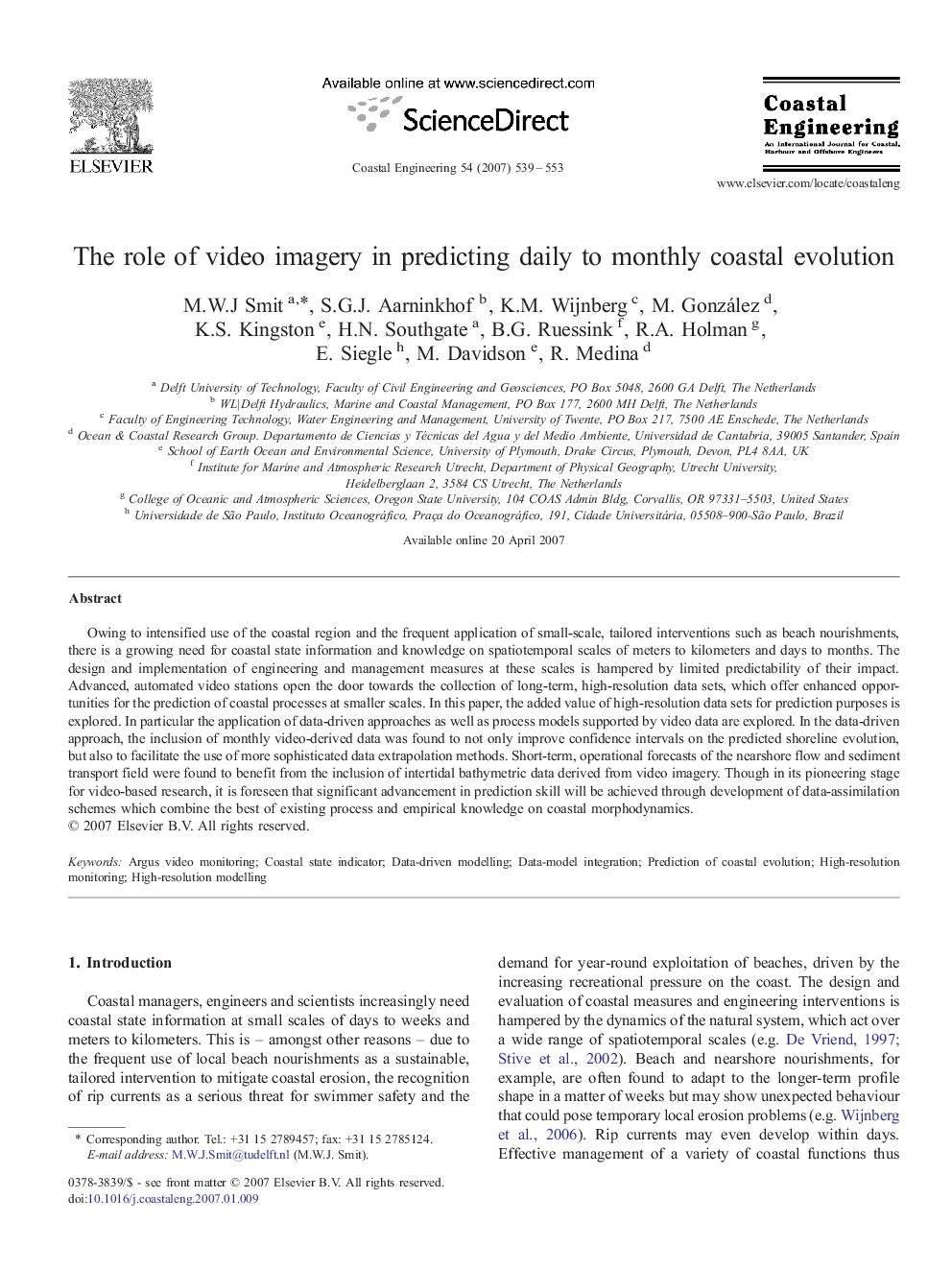| Article ID | Journal | Published Year | Pages | File Type |
|---|---|---|---|---|
| 1721529 | Coastal Engineering | 2007 | 15 Pages |
Owing to intensified use of the coastal region and the frequent application of small-scale, tailored interventions such as beach nourishments, there is a growing need for coastal state information and knowledge on spatiotemporal scales of meters to kilometers and days to months. The design and implementation of engineering and management measures at these scales is hampered by limited predictability of their impact. Advanced, automated video stations open the door towards the collection of long-term, high-resolution data sets, which offer enhanced opportunities for the prediction of coastal processes at smaller scales. In this paper, the added value of high-resolution data sets for prediction purposes is explored. In particular the application of data-driven approaches as well as process models supported by video data are explored. In the data-driven approach, the inclusion of monthly video-derived data was found to not only improve confidence intervals on the predicted shoreline evolution, but also to facilitate the use of more sophisticated data extrapolation methods. Short-term, operational forecasts of the nearshore flow and sediment transport field were found to benefit from the inclusion of intertidal bathymetric data derived from video imagery. Though in its pioneering stage for video-based research, it is foreseen that significant advancement in prediction skill will be achieved through development of data-assimilation schemes which combine the best of existing process and empirical knowledge on coastal morphodynamics.
